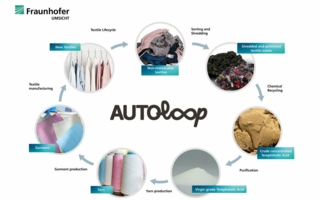12/04/2023 – Research
Smart Textiles for an intuitive communication between humans and computers
When we want to communicate with a computer, we usually press buttons or keys. That restricts how we communicate in virtual environments.
A research team at Saarland University is developing a new technology that allows for more natural communication between humans and computers using ultrathin polymer film. The film essentially acts as a medium for spontaneous interaction and communication between a human user and a machine while also providing tactile feedback to the user in the form of pulses, vibrations or taps, or audible feedback in the form of acoustic signals. “The films that we use are only about 50 microns thick (1 micron = 1 thousandth of a millimetre), which makes them both very thin and extremely light. The films are essentially ready to use and don't require any additional technology to make them into flexible and elastically deformable sensors and/or actuators – they are, effectively, a kind of micromotor,” explained Stefan Seelecke, Professor of Intelligent Material Systems at Saarland University, who together with his research team is studying these smart polymer films at ZeMA (Center for Mechatronics and Automation Technology) in Saarbrücken.
When integrated into a glove or deposited onto a display screen, the polymer film functions as an interactive mediator, providing tactile feedback to the user and allowing a human operator to tell the computer system what they want through gestures or finger movements. Applications include smart textiles for gaming or industrial gloves, virtual reality games, and incorporating the film into clothing for children in hospital isolation units to experience bodily contact with their parents. In a virtual 'Industry 4.0' environment, the smart glove could use gesture recognition to assist the wearer when selecting a component to install or could facilitate grip strength measurements that could help the operator when tightening bolts. The glove could also use acoustic signals to warn the wearer if a mistake has been made during the assembly process. The operator would also be able to control different processes simply by gesturing or moving their hand. It doesn't require a lot of fantasy to see that combining smart gloves and textiles with a VR headset would make interacting in virtual games and work environments far more intuitive and lifelike than when using a games controller.




